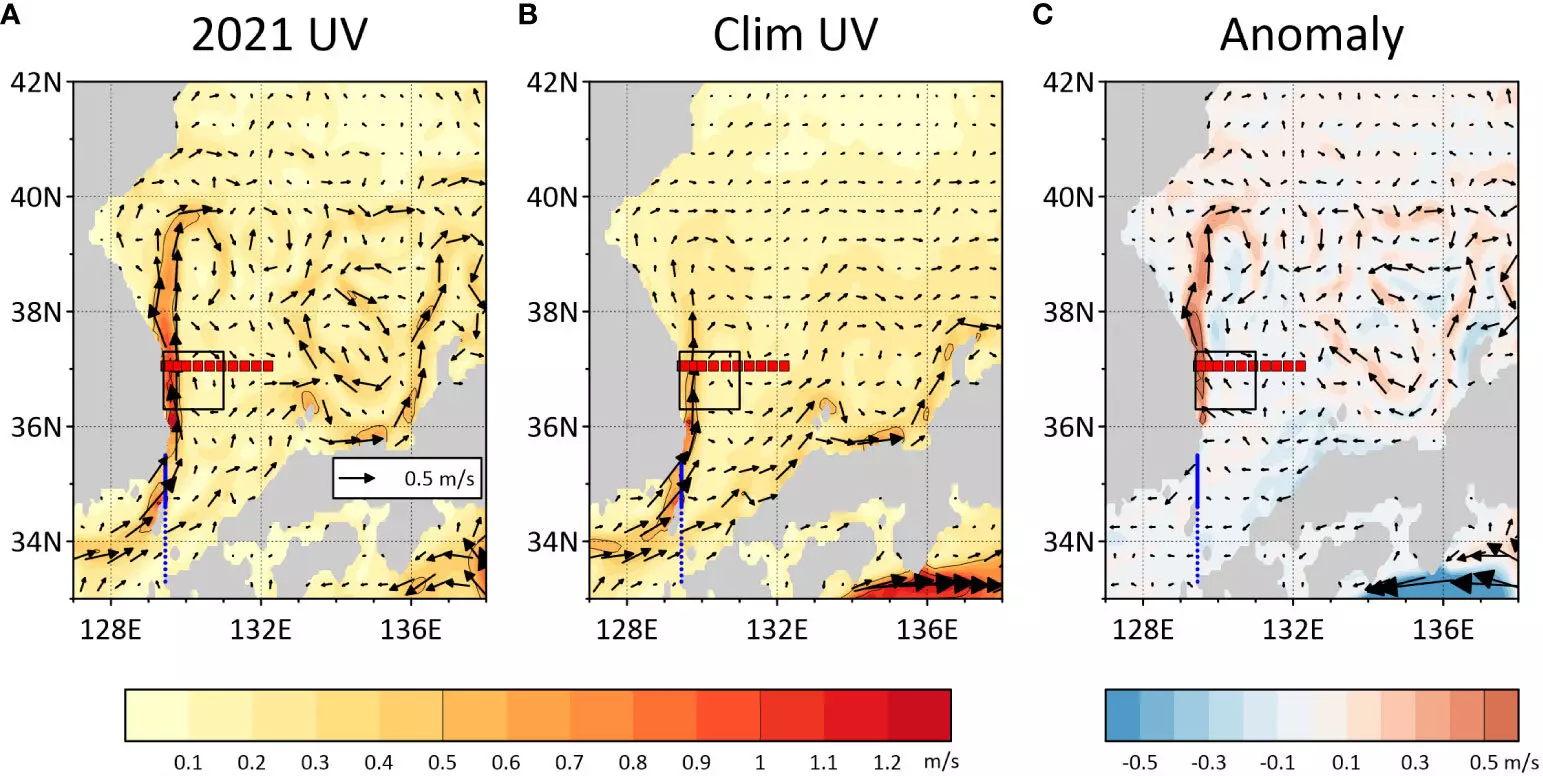With the ongoing impact of climate change, extreme environmental events are becoming a growing concern. These events, both on land and in the marine realm, have significant implications for ecosystems and human populations. In the summer of 2021, the East Sea (Sea of Japan) experienced an anomalous marine heat wave characterized by record-breaking changes in dominant patterns. This article delves into the research published in Frontiers in Marine Science, which investigates the factors that led to this unusual event.
Shifts in East Korea Warm Current
The East Korea Warm Current (EKWC), a western boundary current off the east coast of South Korea, plays a crucial role in transporting warm water from the tropics poleward. Researchers, led by doctoral researcher Gyundo Pak from the Korea Institute of Ocean Science and Technology, observed a northward shift of the EKWC up to 40°N in late July 2021. Additionally, they measured increased current speeds of 1.16m/s and a higher volume of water transported via the EKWC into the East Sea during this period.
The sudden oceanographic changes were attributed to temperature gradients between coastal and offshore regions, as well as changes in wind patterns. In early July 2021, coastal downwelling and freshwater discharge from rivers led to the development of warm surface water being pushed to greater depths, creating zones of low productivity for marine organisms. By mid-August, wind patterns were further altered by Typhoon Lupit, resulting in southerly wind-induced upwelling and changes in surface temperatures.
Subsurface Layers and Influence of Ulleung Warm Eddy
The research team identified the subsurface layer at a water depth of 200-300m as the primary contributor to the temperature change. This layer was influenced by the nearby Ulleung Warm Eddy, a lens-shaped water mass within the thermocline. However, the passage of Typhoon Lupit weakened the eddy, further impacting the marine heat wave.
Understanding the occurrence and causes of marine heat waves is crucial for preserving the health of our oceans and ensuring the well-being of communities that rely on them. Fishing communities, in particular, depend on the ocean as a vital source of protein for a significant portion of the global population. By investigating and analyzing events like the East Sea marine heat wave of 2021, scientists can contribute to proactive measures to mitigate and adapt to future environmental challenges.
The East Sea marine heat wave of 2021 presented an unusual and concerning phenomenon. Through their research, Gyundo Pak and colleagues shed light on the factors behind this event, including the shift in the East Korea Warm Current, temperature gradients, wind pattern changes, and the influence of the Ulleung Warm Eddy. By deepening our understanding of marine heat waves, we can work towards developing effective strategies for the conservation and sustainable management of our oceans.


Leave a Reply